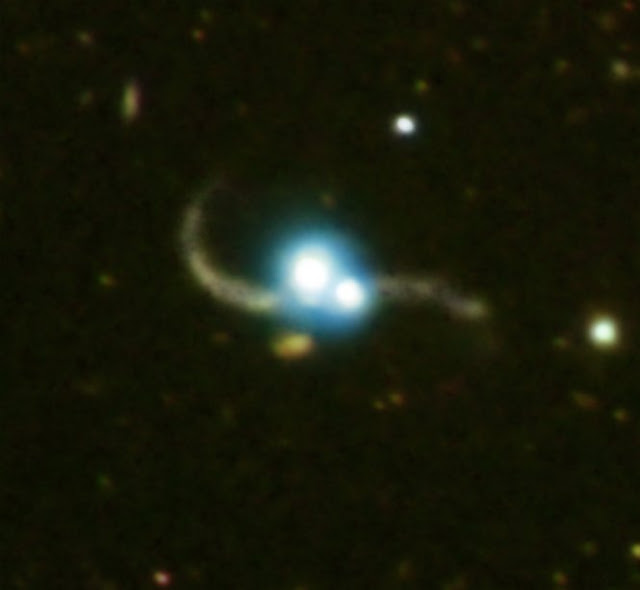 |
| Image: Quasar Pair Captured in Galaxy Collision. Credits: X-ray: NASA/CXC/SAO/P. Green et al. Optical: Carnegie Obs./Magellan/W. Baade Telescope/J.S. Mulchaey et al. |
Strong observational evidence suggests that every massive galaxy hosts a supermassive black hole in its nucleus. The central black hole (BH) is an important component of the galaxy, since the BH mass is correlated with the global properties of the host galaxy, e.g., dispersion velocity, bulge luminosity, or bulge mass.
Moreover, hierarchical models of structure formation predict that galaxies merge frequently, which naturally leads to the the formation of Supermassive black hole binaries (SMBHBs). Following the merger, the BHs rapidly sink towards the centre of the common gravitational potential, under the effect of dynamical friction, and form a bound Keplerian binary. Subsequently, the binary orbit decays, as the BHs expel nearby stars in close three-body interactions, and/or as they interact with a gaseous circumbinary disc. At close separations, the binary is driven to coalescence by the emission of gravitational radiation.
Hydrodynamical simulations of circumbinary discs predict strong periodic modulation of the mass accretion rate on time-scales comparable to the orbital period of the binary. As a result, SMBHBs may be recognized by the periodic modulation of their brightness.
In a recent paper (Charisi et al. 2016) the authors conducted a statistical search for periodic variability in a sample of 35,383 spectroscopically confirmed quasars in the photometric database of the Palomar Transient Factory (PTF).
They assessed the significance of their findings by modeling each individual quasar's variability as a damped random walk (DRW). They identified 33 quasars with significant periodicity beyond the DRW model, typically with short periods of a few hundred days.
Assuming that the observed periods correspond to the redshifted orbital periods of SMBHBs, they conclude that their findings are consistent with a population of unequal-mass SMBHBs, with a typical mass ratio as low as q = M2/M1 ~ 0.01.
- Charisi et al. 2016 (preprint) - A Population of Short-Period Variable Quasars from PFT as Supermassive Black Hole Binary Candidates - (arXiv)
Comments
Post a Comment